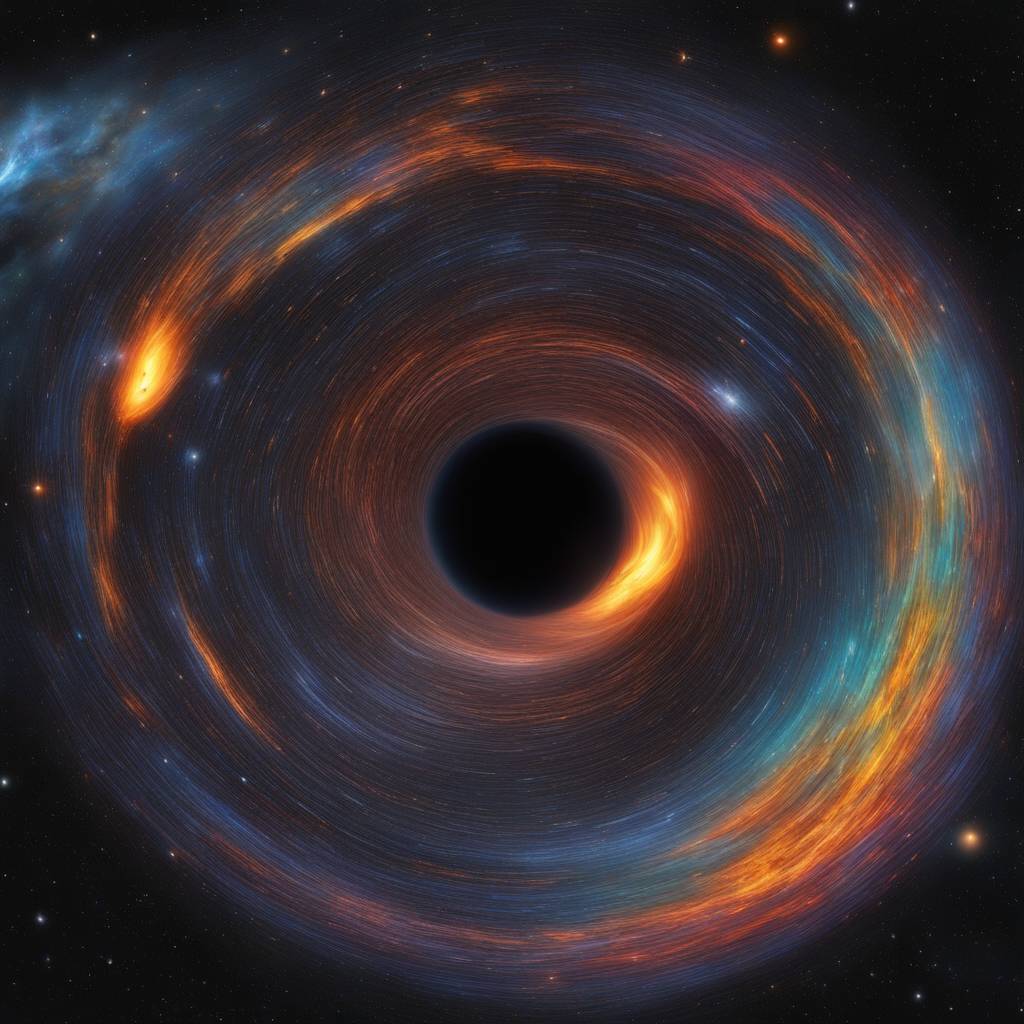Astronomers have discovered a supermassive black hole in a distant galaxy that has started exhibiting unusual behavior, emitting plumes of gas every 8.5 days before returning to its normal state. This periodic outburst is a new phenomenon that has not been observed before and is believed to be caused by a smaller black hole orbiting the central supermassive black hole and disrupting its disk of gas. The findings challenge the conventional understanding of black hole accretion disks, suggesting they may contain a variety of objects, including other black holes and even entire stars.
The study, which will be published in the journal Science Advances, involved researchers from MIT, Italy, the Czech Republic, and other institutions. The team’s lead author, Dheeraj “DJ” Pasham, describes the discovery as revealing that black holes are capable of more complex behaviors than previously thought and suggests that similar systems may exist that have yet to be identified. The researchers used data from the All Sky Automated Survey for SuperNovae (ASAS-SN) network, which detected a burst of light in the distant galaxy, prompting further investigation.
Pasham focused on the event using NASA’s NICER X-ray telescope on the International Space Station, which revealed a pattern of dips in the galaxy’s X-ray emissions every 8.5 days. After consulting with theoretical physicists from the Czech Republic, the team developed simulations that supported the idea that a smaller black hole was orbiting the central supermassive black hole and puncturing its disk periodically. The findings indicate that the outburst observed in December 2020 was caused by a tidal disruption event, where a nearby star was torn apart by the immense gravity of the supermassive black hole.
The researchers conducted simulations to confirm their hypothesis, demonstrating that a second, smaller black hole likely orbits the central supermassive black hole, periodically disrupting its disk and emitting plumes of gas. These new findings challenge traditional models of black hole accretion disks and suggest that similar systems may be more common in the universe than previously thought. The discovery provides insight into the complex dynamics of black hole systems and highlights the potential for more discoveries in the future.
The team’s research has implications for understanding the behavior of supermassive black holes and their surrounding environments. The discovery of a smaller black hole orbiting a central supermassive black hole and disrupting its accretion disk sheds light on the diverse nature of these cosmic objects. The findings suggest that there may be a large population of similar systems in the universe waiting to be discovered, opening up new avenues for research in astronomy and astrophysics.
Overall, this study represents a significant advancement in the field of black hole research, providing new insights into the behavior of supermassive black holes and the potential presence of smaller black holes in their vicinity. By using innovative observations and simulations, the researchers have identified a unique system that challenges traditional models of black hole accretion disks. This research contributes to our understanding of the complex dynamics of black hole systems and paves the way for future discoveries in the field of astrophysics.













